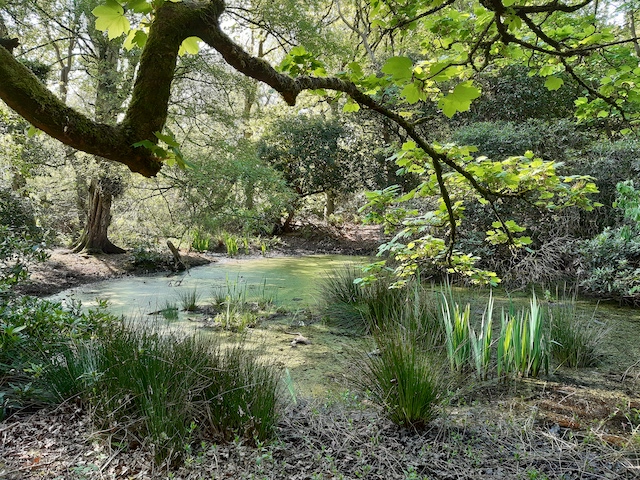
Some of you may live on Pitts Heath Road in Sandymoor. Others will undoubtedly have seen the road sign. Have you ever stopped to think what ‘Pitts Heath’ refers to?
Pitts Heath Wood lies in the floodplain of Keckwick Brook at the western end of ‘Moore Meadows’. It is low lying, subject to seasonal flooding and has a high water table. This means that it is classed as ‘wet woodland’. More information about this form of habitat can be found here.
Wet carr (alder) woodland dominates, with open water and seasonal ponds. The area is criss crossed by drainage channels. Yellow flag iris, reed mace and phragmites grow in the pools. Further planting of alder, birch, willow and hazel took place in the 1980’s and 1990’s. Parts were being overrun by rhododendron, which has largely been cleared now. There is also bracken and ferns, brambles and Himalayan balsam. Bluebells and foxgloves grow in the drier areas.
Today, the wood extends to 10 acres and is owned by the Woodland Trust, but managed by Halton Borough Council. The wood is designated as a Local Wildlife Site. There are water voles in the ditches and the wood has the largest heronry locally.
There is no indication as to how old the woodland is. The tithe map of c1840, records it as extending to just three acres. It was owned by Sir Richard Brooke and described as a plantation. Recent building has impacted upon the drainage in the area, so that it is now wetter than it was.
It is part of Halton Moss, which is an area of former low lying mossland and farmland. This extended down towards the River Mersey and has been extensively drained. It can be assumed that this small area of wood is just so wet, that drainage would be uneconomic. It is about 8m above sea level and adjacent to Keckwick Brook which floods regularly in this area. So, today, its management consists of minimal intervention to allow the wet woodland to grow and to preserve it as a haven for wildlife.
Access is confusing. The Woodland Trust website says that there is no access, to ensure that this fragile habitat is preserved. Yet there is also a Woodland Trust sign welcoming walkers into the wood. However, the wet nature of the ground makes walking difficult throughout the year and undoubtedly, the woodland floor would be easily damaged by too many visitors.
-
 Pitts HeathSee images »
Pitts HeathSee images »
Please help to preserve it.
